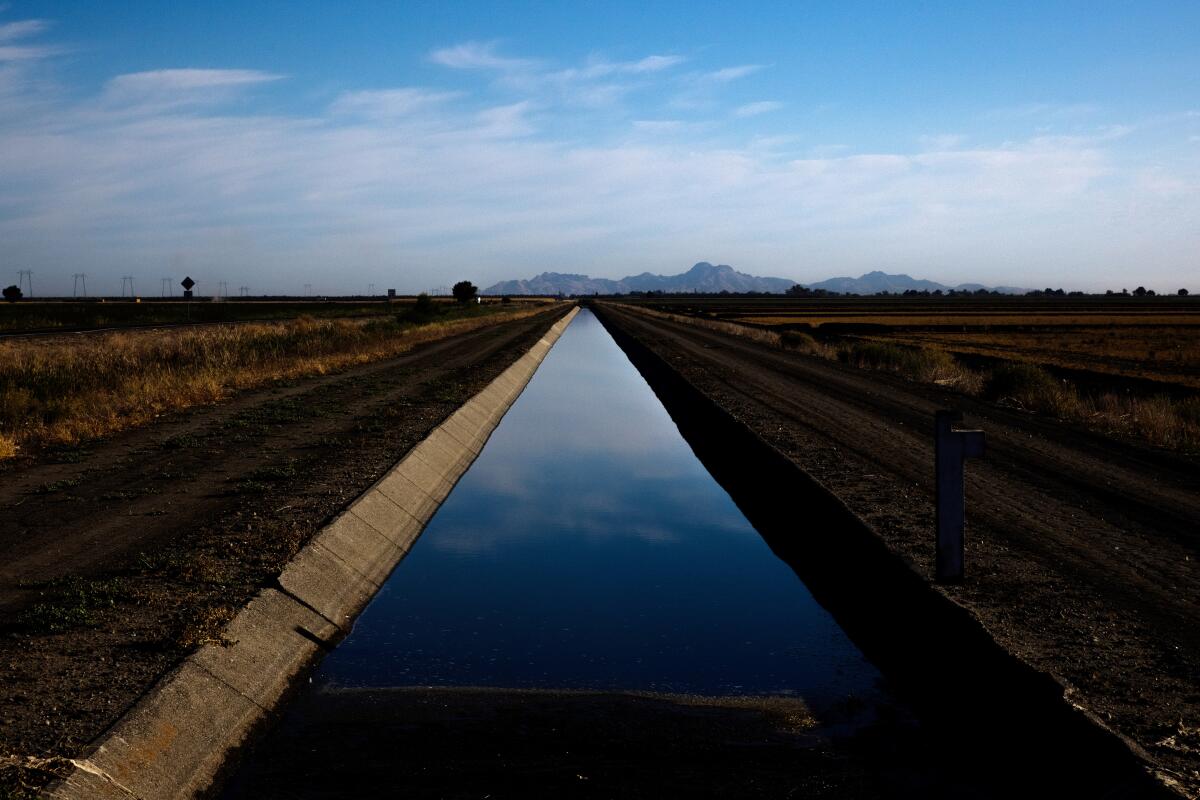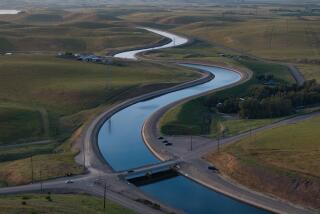Op-Ed: Happy New Water Year — Californians have to face some difficult wet season truths

Happy New Water Year. For those of us who work on California water challenges, the start of the new year isn’t Jan. 1; it’s Oct. 1, the official beginning of the state’s wet season. This is the time of year we start to look out over the Pacific for the storms we hope will bring life-giving precipitation, replenishing our rivers and streams, coating our mountains with snow, refilling our reservoirs and recharging our soils, forests, wetlands and groundwater.
And while we hope for a good water year, we also hope for moderation in the face of ever-worsening climate change, for storms that don’t overwhelm our levees, flood our cities and towns, or wash away our farms and homes.
We’re looking ahead with no small amount of worry. The past two years have been bad: years of drought, heat, fire and ecological collapse. A repeat of the past two years would be catastrophic. Every drought is different, but with climate change upping the ante, the current drought has been one for the record books.
We’ve seen rapidly disappearing snow that simply evaporated off the mountains rather than producing runoff, the death of native salmon when the temperatures in our rivers rose to lethal levels, parched farms, extreme fires that even now are sweeping through our dry forests, expanses of exposed mud at the bottom of our emptying reservoirs, and the nonstop overdraft of groundwater sucked up by stronger and stronger pumps from deeper and deeper wells, causing Central Valley communities on the frontlines to lose access to safe and affordable drinking water.
Will the next water year be wet or dry? We don’t know. We can only watch the weather patterns swirl and shift, the storms form, move and dissipate. But we can do far more than that to actively prepare California’s water system for whatever shapes up over the Pacific.
We can change the way we collect, treat, move and use water. We can rethink how to have a healthy agricultural community that grows more food with far less water, and how to protect California’s rich but deeply threatened environment.
It’s long past time to face some difficult truths. The first is that climate change is real, accelerating and overturning long-held assumptions about how much water we can expect, when we can expect it, and how we should manage it.
For years, climate scientists have told us that extreme events will become more extreme. My early climate research 35 years ago warned of dramatic losses of snowpack and changes in river flows from climate change, and observations now show these projections are coming true, but our dams, treatment plants and water institutions were designed for the climate of the last century. Let’s turn engineers, policymakers, businesses and communities to the task of managing water for the future, not the past.
Second, experience shows that the greatest impact of drought falls on natural ecosystems and small communities, not our farms or cities.
Even during good water years, we’re losing native fisheries, destroying wetlands critical for migrating birds and mismanaging forests. Californians are justly proud of the state’s remarkable diversity of landscapes, but we have utterly failed to acknowledge the ecological damage our current water policies are doing.
The antiquated system of water rights and infrastructure, much of it put in place more than a century ago, focuses on urban populations and agriculture; the health of the environment wasn’t considered. As a result, current environmental protections are only a Band-Aid on deep wounds to the very life-support systems that are part of what makes California a treasure. We must return water to the environment as a top priority and meet basic needs for safe water and sanitation for all.
It is also time for an honest conversation about farming and ranching. California is a wonderful place to grow food. We have great soils, a (mostly) wonderful climate, and (usually) decent amounts of water. But we must admit we’ve brought too much land into production given how much water can be reliably and sustainably delivered. We grow too many water-intensive crops that would be better raised in places with more reliable rainfall. We massively overdraft groundwater, leading to depleted aquifers, collapsing infrastructure and drying streams.
And the dysfunctional and poorly enforced water-rights rules now in place fail to encourage efficient agricultural water use, equitable distribution of resources or flexible responses to a new climate reality. Shifting to a future where California agriculture continues to thrive, but on less land, with less water, with no detrimental overdraft of aquifers and with better environmental outcomes is both imperative and possible. This will require social and political conversations we’ve been reluctant to — but now must — have.
Finally, we must rethink water supply, demand and use in our cities and suburbs. The old approach of building another reservoir or aqueduct or moving water from the next distant river is dead. There’s no new water to be had in the West. Indeed, it is time to give up some of the water we’ve already claimed.
The good news is there is still untapped potential to increase the productivity of our water use and expand its reuse. Let’s continue to invest in appliances and industries that use water efficiently, find and eliminate home and business leaks, and replace landscapes and lawns that suck up water (and require fertilizers and pesticides) with native low-water gardens.
And there is still vast potential to treat wastewater to high standards and make it a reliable source of supply, as well as in replumbing our streets and stormwater systems to capture and use more of the water we get, rather than shunting it out to sea.
Every new year is a chance for reflection, for resolutions to finally, this year, do things differently. Let’s invest in the changes California needs, and create policies and systems that use water carefully and sustainably for the benefit of all.
Happy New Water Year.
Peter Gleick, a hydrologist and climatologist, is co-founder and president emeritus of the Pacific Institute, a nonpartisan, nonprofit global water think tank based in Oakland.
More to Read
A cure for the common opinion
Get thought-provoking perspectives with our weekly newsletter.
You may occasionally receive promotional content from the Los Angeles Times.










